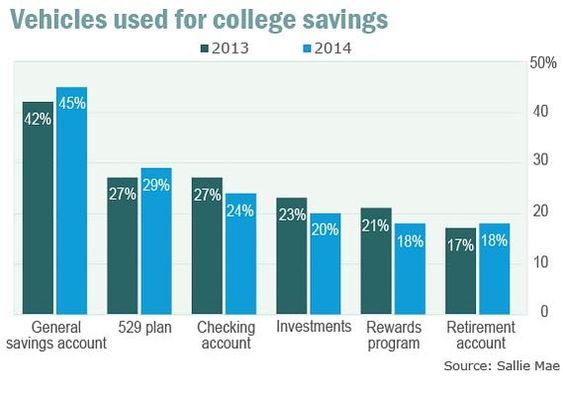Most know little to nothing about the biggest investment they will ever make: funding a college education.
If a family has two or more children, their total college expenses could end up being more than their mortgage. Considerably more planning and research should comprise this financial decision.
While the majority of people in this country know squat about investing, college planning isn’t even on the radar.
The most efficient long-term college planning tool is the 529 plan.
68% of people never heard of one; according to Bloomberg, an astonishing 97% don’t use them!
It’s fair to say, the most Americans have at least HEARD of a 401(k).
This ignorance leads to bad decisions, underfunded accounts and unnecessary expenses. Not to mention, unhappy children.
Here are four common college planning mistakes and how to avoid them:
- Not filling out the FAFSA form: The great misconception is high-earning parents are not eligible for aid. This is 100% false. The most expensive schools often have the biggest endowments. Children of high earners are eligible for merit aid. Academics, athletics, and other special talents are the criteria, not income. In addition, lower-cost federal loans with better terms cannot be utilized without first filling out the FAFSA. Over the 2016-17 academic year, 1,234,249 high school graduates didn’t fill out the FAFSA; not smart.
- Not Understanding Financial Aid Formulas: Schools employ different formulas for assets used for college expenses. The EFC, or expected family contribution, is the amount of money a family is expected to cough up annually. The formulas are the secret to keeping this number to a manageable level. Leaving money in the student’s name is a bad idea. In FAFSA world, parents’ assets have a 5.6% aid penalty. Those assets in the student’s name clock in at 20%. Student income comes with a hefty 50% charge. The penalty for ignorance is much, much higher.
- Choosing the Wrong Investments and Savings Vehicles: Over 40% of parents use general savings accounts to fund college. Few take advantage of the tax-advantaged compounding benefits of 529 plans and Roth IRAs. Holding a portion of college funds in stocks will help keep up with the rapid rise in tuition for many well-known universities. Most parents do not understand the role timeframe plays in investing. Placing college-targeted funds for a small child in the bank is a much bigger risk than investing for the long term in stocks because it guarantees that the account will not grow, while tuition will increase annually.

4. Foregoing Professional Advice: Most people wouldn’t enter a courtroom without a lawyer. Yet, they think nothing of making their biggest and most important investment without any professional advice. Many mistakenly believe their accountants will take care of this. Getting advice for college planning from a fiduciary-based real financial advisor is worth its weight in gold. However, beware of financial salespersons recommending products like expensive and complicated cash value life insurance.
“The only people arguing for these are the ones who are going to make commissions from selling the policies,” according to Mark Kantrowitz, an expert on college planning.
Run; don’t walk away, from these people. The same goes for financial salespeople recommending expensive commission-based 529 plans or out-of-state plans when your state has a low-cost plan and a state income tax break.

This topic is very complicated. We have only scratched the surface regarding the intricate details. If you are confused about this and how college planning integrates with retirement and other savings goals, give us a shout.
In the meantime, subscribe to my blog and make sure you receive our monthly college links: Compound Your Knowledge.





